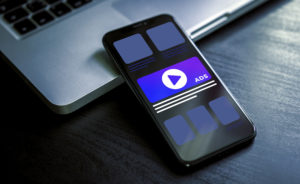
Your business needs marketing to find its customers. Small businesses and start-ups often leverage more time and muscle than dollars when it comes to their marketing plans. For example, their marketing might be purely event, networking and partnership marketing – things a sales team can drive. Their hard marketing expenses are probably limited to a brochure-like website, event costs, and maybe printing some collateral materials.
Some new businesses spend a lot of money on marketing when they start because they’re trying to generate customers and leads for their businesses without the assistance of a sales team. while how much you should spend on marketing can’t be answered in a single, general statement, we can figure it out together.
“Am I spending too much or too little on marketing?”
After a few years or more of success leveraging either model, the question becomes, “Am I spending too much or too little on marketing?”
The basic way to decide your marketing budget is to look at your Customer Acquisition Cost (CAC) and the Lifetime Value (LTV) of a customer. (Check out our library of free resources to learn more about ROI, CAC and LTV.) In what you sell, what profit do those sales gross for you currently and how much of that profit would you be willing to invest in the acquisition of that customer? What you can afford to spend depends on how lean your overhead expenses are. If, once you acquire a new customer, they buy from you repeatedly and are fairly loyal, you may be able to figure out the LTV of a typical customer. If the LTV is significant then you can spend a little bit more on acquiring that customer versus if they’re a one-and-done kind of buyer.
For traditional product companies, many purchase are single-time only. There’s the possibility that a customer will return in the long-term, but it’s difficult to calculate that into your LTV. For example, most people purchase a new car every seven years. While a car salesperson doesn’t want to burn any bridges, they may not see that customer again for many years. For most decision-makers with this type of business model, LTV is calculated on that single purchase.

On the other hand, software-as-a-service (SaaS) companies rely on a subscription-based business model. They don’t make their CAC back immediately, but only after several occurences of the subscription revenue. In this case, LTV is calculated based on how long the typical customer retains their subscription.
If your widget sells for $100 and your gross profit for that widget is $75, and you’re running your business from your garage and don’t plan on expanding, maybe only $25 of each widget sold goes to paying salaries and other overhead expenses. From the $50 remaining, you could look at spending anywhere from $10 to $25 to acquire a new widget buyer. If that buyer will buy widgets from you every year for the next five years, then maybe you’re willing to spend somewhere between $50-$100 to acquire that customer.
As you can see, it really depends on the business. If you have a sales team working, many businesses put the commission and salaries of their sales team in the acquisition cost.
“What happens if I spend too little on marketing?”
Based on personal experience, I would say 9 times out of 10, small to medium-size businesses don’t have enough marketing budgeted into their plan and pricing model to create scalable growth. SMBs need to understand the real-world price of working with marketing professionals, online advertising budgets, having a sales team and pricing their “widgets” accordingly. Otherwise, growth will be very difficult to achieve through marketing efforts.

The best statement I hear regularly that sounds like money burning is, “I occasionally boost a post on social media, but I don’t think it does anything.” Or, “I set-up Google Ads and it’s running, but I don’t know if it’s helping.” You would be surprised at the size of organizations that utter these words in meetings.
Check out our marketing ROI calculator here.
Most of the time, SMBs have a $100 widget that they’re spending $1-$3 on the marketing to acquire the customer and wondering why their marketing isn’t working. It’s far more likely that they should be spending $15 in marketing to sell that widget. If that’s too expensive as a CAC, then the price of that widget should go up to $115. It’s not a big enough price increase to scare away good customers, and it’ll cover the cost of a realistic marketing campaign.
Back into a realistic budget like this:
Sales Goal for Widgets this Year is $100,000.
- My gross profit from this is $50,000.
- I need $25,000 from widget sales to cover my expenses and salary.
- That leaves me $25,000 to gain as net profit on widget sales that I can reinvest or keep.
- I have to sell 1000 widgets to reach this goal.
- I’m willing to spend half of my net gain to get to my goal – $12,500.00
- That’s a CAC of $12.50
- Since most of my widget customers buy from me at least once more, I know that this a modest investment.
Now you can work with a marketing team on a strategy to gain more customers knowing your budget. Or, if you choose to manage your own marketing, you can track your sales against your marketing spend and try to optimize what you’re doing to keep it at your ideal acquisition cost. If you find you’ve done your best or your team has done their best and it’s not working, you may have to increase your investment and adjust your prices.

Long-term CAC averages are the best way to monitor marketing expenses. Acquisition costs become lower the longer you invest in consistent marketing campaigns. Gaining brand recognition is one of the best ways to lower acquisition costs. It’s just easier to buy something if you’ve heard of it before. That will only happen if you have a long-term vision for your marketing plan.
How to Plan for Long-Term Marketing Growth
Brand/Name recognition is our recommended goal for SMBs looking to spend money on marketing in the early years. Unless your widget is one-of-a-kind, your recognizable brand is really what brings your marketing costs down and fuels business growth. If you’re willing to commit to a long-term strategy, consider a higher percentage of your profits going towards building brand recognition for the first couple of years. Once you have an established, reputable brand in place for your business, you can focus more directly on widget sales and lowering your CAC.
By the way, businesses with strong, recognizable and reputable brands have higher LTVs, meaning their marketing spend goes further as an investment.
Want to calculate your marketing budget using our free online calculator? Click here.
If you need guidance on how to build a marketing plan, start by checking out our list of free templates and ebooks. If you’re ready for a team of experts to launch your brand online, make sure to contact us.
I’m a mom, a small business owner, and I’m a marketing professional with over a decade helping businesses with their branding and online presence. When I’m not spending time with my family or on my business, I love cooking (and eating) and snuggling with my dogs while I binge on TV shows. My favorite authors are Malcolm Gladwell and Steve Martin. My favorite movies are L.A. Story, Little Mermaid, Hedwig and the Angry Inch, and Trainspotting.